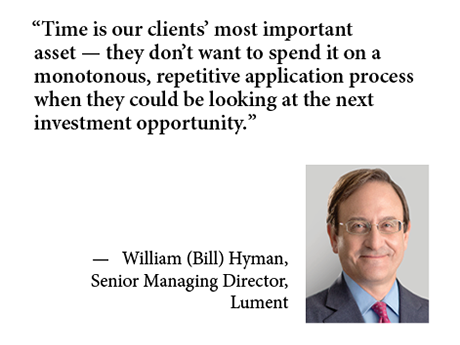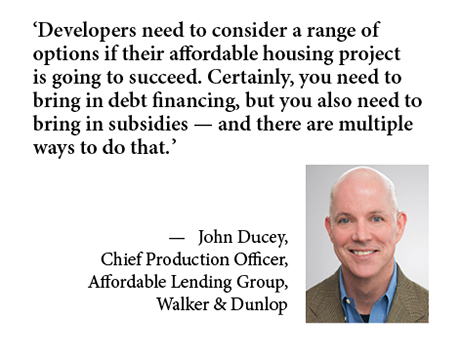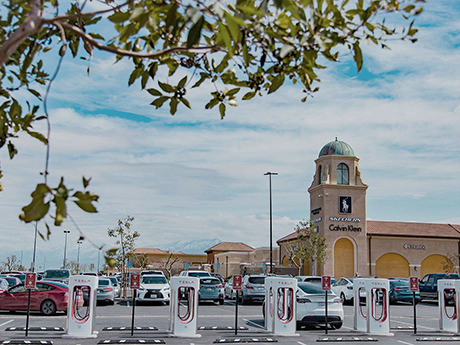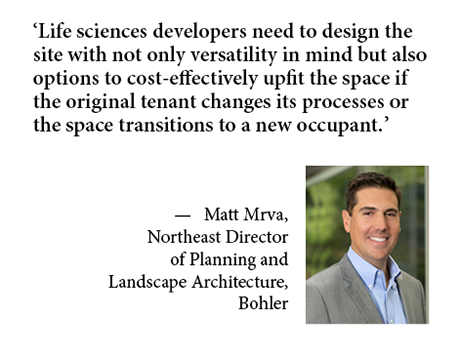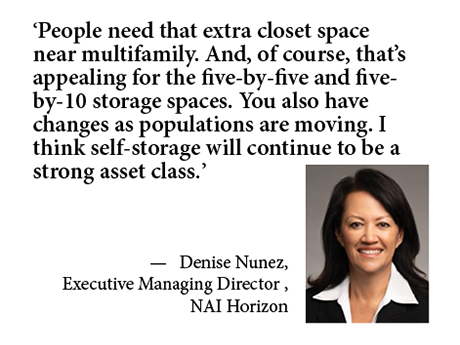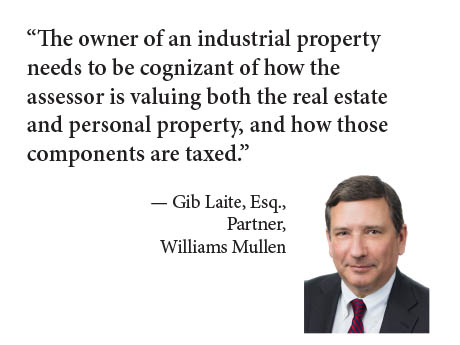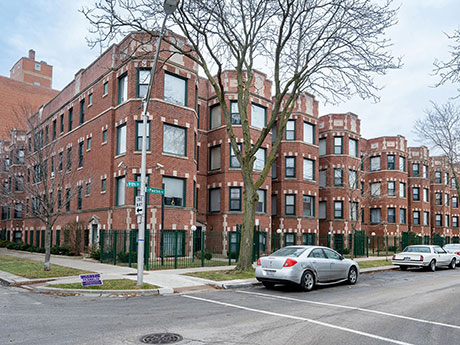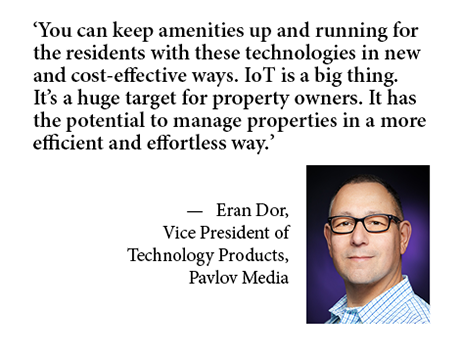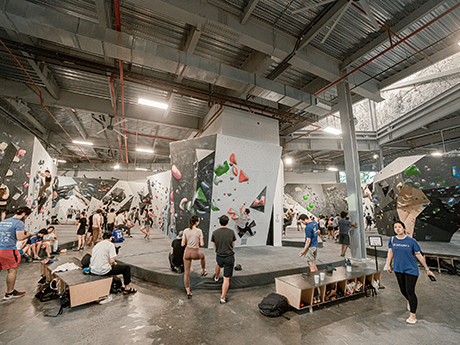Today’s accelerating technology transformation is altering how the commercial real estate industry executes transactions and manages assets. “The amount of information that a multifamily borrower needs to submit and disclose has become more demanding over time,” says William (Bill) Hyman, a Lument senior managing director who oversees the firm’s strategic business technology transformation and conventional loan production. “That has made due diligence more complex and data intensive, and we wanted to create a more secure and expedient way to tackle that process.” Seeing this need, Lument responded by creating a suite of proprietary technology tools. Across the industry, the advent of online, friendlier multifamily loan application and servicing processes has not only eliminated the transfer of sensitive information through email by moving the processes to secure portals, but it has also streamlined common paper-based, time-consuming and burdensome tasks. That has translated into much speedier decisions about loans and responses to questions and requests. LeapOnline Beginnings Lument is a commercial real estate finance solutions provider based in New York that specializes in Fannie Mae, Freddie Mac, Federal Housing Administration and balance sheet lending. The company’s digital transformation began in 2017. At the time, the company saw the opportunity to better …
Features
Affordable HousingContent PartnerDevelopmentFeaturesLoansMidwestMultifamilyNortheastSoutheastTexasWalker & DunlopWestern
How to Maximize Agency Financing for Affordable Housing
There are a variety of ways to build affordable housing, but implementing these strategies has become an increasingly difficult proposition in 2023. Affordable housing projects seem to face challenges on every front. Generally affordable housing developers will: Despite intensifying renter demand for new units, developers are struggling to make their projects financially feasible, says John Ducey, chief production officer in the affordable lending group at Walker & Dunlop. “Affordable housing developers are facing some of the toughest headwinds I’ve seen in more than 20 years in the industry,” Ducey says. “That means developers are forced to work harder than ever to structure deals that stretch scarce housing subsidies and maximize agency financing.” Challenging Conditions One impediment to affordable housing efforts is reduced future rent levels, related to area median income (AMI) caps the Department of Housing and Urban Development (HUD) imposed recently on LIHTC properties in many markets in the United States. The unexpectedly restrictive caps forced developers to slash revenue projections, scuttling some transactions and forcing many loan applicants to renegotiate or seek alternative financing to salvage deals. On the expense side, inflation and the labor crunch continue to drive up costs for new construction, renovation of older affordable …
For decades, outlet malls have been a popular destination for shoppers of all ages. From the first multi-store outlet center that Vanity Fair opened in 1974, in Reading, Pennsylvania, and throughout the 1980s and 1990s, outlet malls grew rapidly. Outlet malls offer a wide variety of name-brand merchandise at discounted prices, and as a result, they are a great way to save money on popular brands of clothes, shoes, and accessories. Although outlet malls have been around for decades, the pandemic was a major hit to the retail landscape. Prior to 2020, outlet malls were seeing a surge in popularity, as consumers became more price-conscious and savvy on how to save money on their favorite brands. In June 2022, visits to outlet malls in the U.S. were down 6.7 percent from 2021 and down 14.3 percent from 2019, according to Placer.ai. This had outlet mall developers scrambling for a strategy and a path forward. Growth in California One of the most thriving outlet malls in the country is the Outlets at Tejon in Tejon Ranch, California, strategically located on Interstate 5 between Los Angeles and Bakersfield, just south of the Highway 99 interchange. This mall is home to over 50 …
BohlerContent PartnerDevelopmentFeaturesIndustrialLife SciencesMidwestNortheastOfficeSoutheastTexasWestern
Site Design Science: How Understanding Operations Draws Pharmaceutical Manufacturers
Pharmaceutical companies have captured the interest of many developers and with good reason. Softening demand for traditional office space has planners looking for alternative uses to fill out business parks and multiuse developments, and drug makers represent a promising source of highly valuable occupancy. Speculative construction that accelerated during the pandemic has given pharmaceutical manufacturers plenty of options and enabled them to be choosy in site selection. However, to compete for end users, developers must ensure their properties offer the features and amenities drug makers seek, says Matt Mrva, northeast director of planning and landscape architecture at Bohler, a land development consulting and site design firm. “Simply adding a life sciences label on conventional flex space is unlikely to lure pharma companies. Research, lab and pharmaceutical manufacturing facilities often require specialized infrastructure and site layouts,” Mrva says. “Even if a property is zoned to allow for life sciences, design and development teams need to understand the proposed operations in order to optimize the facility.” Unique Facility Requirements Depending on anticipated needs, tenants may require advanced climate control and ventilation, redundant electrical feeds, high-volume water and sewer service, on-site wastewater pretreatment, backup power generation, reinforced floors to handle the weight of …
Self-storage has had an amazing run since just before the pandemic. Cap rates started near 6 percent, with buildings starting at $150 per square foot. Then came the flood of pandemic capital pushing prices — by mid-2022 prices jumped to a point no one had previously experienced. “In some of the bigger markets, we were seeing per-square-foot prices of $300 and above for the first time,” says Denise Nunez, executive managing director with NAI Horizon. Cap rates fell to as low as 4 percent. “The low cap rates had gotten to such a point where many brokers were not even pricing deals because they didn’t want to miss that extra that they could get on the sale.” But rising interest rates have had an impact on self-storage, as they have had on every other commercial real estate asset class, with prices reversing again. Investors are still unsure of what the Federal Reserve will be doing in the near term with monetary policy. Building costs are high — final delivery construction costs are still higher by 40 percent or more than pre-pandemic. That reality has resulted in investors alternating between cold feet and, with some signs that the Fed may plan …
Industrial Owners Seeking Fair Tax Treatment Should Differentiate Personal Property From Real Estate Values
by John Nelson
North Carolina taxes both real estate and personal property, but differing valuation schedules and processes for the two types can lead to confusion and inflated tax bills for industrial property owners. Understanding how assessors value industrial properties can help those taxpayers detect issues and contest unfair assessments. Dual processes North Carolina requires assessors to revalue real property at least every eight years. The value as of Jan. 1 of the valuation year then remains constant until the next valuation, unless specified changes in the property occur to trigger a change in the assessment. Many counties revalue every four years, and a few, even more frequently. Assessors use a market analysis to determine real property’s taxable or fair market value. This involves applying one or more of the three valuation approaches: cost, comparable sales, or income. The state requires annual valuation of personal property based on installed cost, which is subject to the applicable trending and depreciation schedules. For the most part, taxing authorities rely on the taxpayer’s annual business personal property listing to determine what items of personal property are present, the installed cost, and the trending and depreciation schedule applied. The counties follow schedules for auditing the property tax …
By Harrison Pinkus, Interra Realty Though many multifamily investors have been able to close transactions in today’s less-than-ideal economic climate, high interest rates remain a challenge for some. However, there is one strategy that can propel a deal over the hurdle of high interest rates and across the finish line: assuming the seller’s loan. With plenty of investors looking to acquire assets despite elevated rates, loan assumptions offer a win-win opportunity, as long as the buyer and seller surround themselves with a knowledgeable team of brokers, attorneys and lenders. The biggest advantage for buyers is a lower financing rate than what is currently available on the market. Buyers also benefit from lower closing costs and no appraisal. Meanwhile, loan assumptions at a lower rate provide sellers with the leverage to command a higher asking price for their property. Loan assumptions are by no means the only route to closing a deal in today’s environment. After all, investors can always move ahead with a purchase now and finance at current rates with a plan to refinance later if rates improve. But, since the buyer must be able to acquire debt financing and carry a higher rate for a year or more …
Internet connectivity is the digital equivalent of a foundation for any multifamily property. Residents want access for communications, entertainment, business and personal needs. Property operators need connections for management and reporting software resources. Good and reliable connections to the Internet, and a dependable Wi-Fi network as a way of distributing that access, are essential. Looking three to five years into the future, these connectivity needs become even more demanding and complex. The Internet of Things (IoT) creates a layer of interesting application and use cases for property owners. IoT defines the collective network of connected technology that enables communication between devices (“things”) and the cloud and/or among the devices themselves. IoT devices are the technology that creates smart home and buildings. IoT devices also support and simplify functions such as rental property management, energy usage reduction, maintenance cost reduction and more. “Looking into the future, IoT applications can make the property more efficient in surprising ways,” says Eran Dor, vice president of technology products at Pavlov Media. Leak detectors can provide early warning of flooding and appropriately shut off water before any significant damage occurs. Trash cans can be equipped with sensors that indicate when to collect, rather than requiring …
When looking for new markets that might be a fit for their brand, the owners of VITAL Climbing Gym, a bouldering concept, seek out locations that are “in the mix and part of people’s lives.” This is somewhat paradoxical with the genesis of the company, which originated during a long and very solitary bike tour more than a decade ago. Co-founder David Sacher recounts that he was alone in Argentina (having started his tour at Prudhoe Bay in Alaska) and struggling through a “windy, slow and tough” stretch when the idea for the first VITAL gym emerged as a sort of exercise in escapism. California Dreaming Sacher, who had climbed throughout college with his now business partner, Nam Phan, envisioned “a little climbing gym” with a “very laidback culture,” 24-hour access and a barbecue out front — in short, a place where he and his friends could “cook food and hang out and climb.” In 2010, that dream became a reality with the opening of the first VITAL Climbing Gym in California, where Sacher and Phan attended school. In addition to achieving the atmosphere Sacher envisioned, which he describes as “happy,” “familial” and that of a second home, the facility …
Industrial activity runs a wide gamut in Colorado Springs. Situated on the busy I-25 corridor, the Centennial State’s second-largest city is a key distribution point to Northern Colorado and surrounding states. But distribution is only part of the story. Thanks in part to Fort Carson Army base on its southern edge and the U.S. Air Force Academy to its north, the seat of El Paso County is home to an assortment of aerospace and defense manufacturers, as well as other industry clusters ranging from medical equipment makers to suppliers of semiconductor components. “It’s a military-friendly community that offers a lot of support for entrepreneurs and families just separating from their respective branches,” says Megan Mechikoff, an associate broker specializing in industrial real estate at NAI Highland Commercial Group. “That generates a lot of startups that work directly for the Department of Defense or attach themselves to a larger brand like Lockheed Martin or Northrop Grumman.” Colorado Springs attracts employers with its highly educated workforce, affordable cost of living and excellent quality of life, which includes mild winters on the protected Eastern slopes of the Rocky Mountains and proximity to outdoor activities and winter sports, Mechikoff says. What Colorado Springs lacks, …


